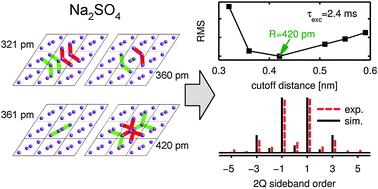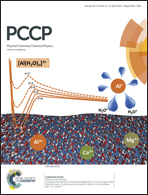Central-transition double-quantum sideband NMR spectroscopy of half-integer quadrupolar nuclei: estimating internuclear distances and probing clusters within multi-spin networks†
Abstract
We introduce a strategy to estimate the size of clusters of recoupled homonuclear half-integer quadrupolar nuclei under magic-angle spinning (MAS) conditions, by combining double-quantum (2Q) sideband NMR experiments with an approximate numerical analysis based on the summation of all spin-pairs present over a given radius of the structure. The experiment relies solely on the evolution of homonuclear 2Q coherences (2QC) among the central-transitions (CT) of half-integer spins and is suitable for probing clusters in network structures, such as those encountered in large groups of oxide-based materials. Experimental 11B, 23Na and 27Al NMR results are presented on bis(catecholato)diboron, Na2SO4 and Al2O3, respectively; in each case, the growth of the spin-cluster size was monitored from a series of experiments that employed progressively lengthened 2QC excitation intervals. Our new approach is the first option for probing larger constellations of half-integer spins; it provides similar information as the “multiple-quantum spin counting” experiment, which is well-established for spin-1/2 applications but has hitherto not been demonstrated for half-integer spins undergoing MAS. We also discuss various options for determining the internuclear distance within a (nearly) isolated pair of half-integer spins by comparing the experimental 2Q sideband NMR spectra with results from numerical simulations involving various degrees of approximation.


 Please wait while we load your content...
Please wait while we load your content...